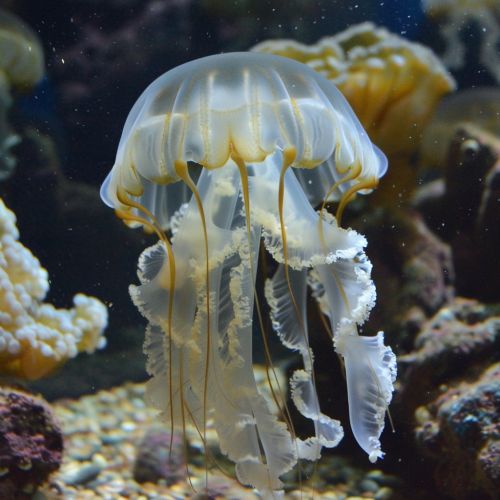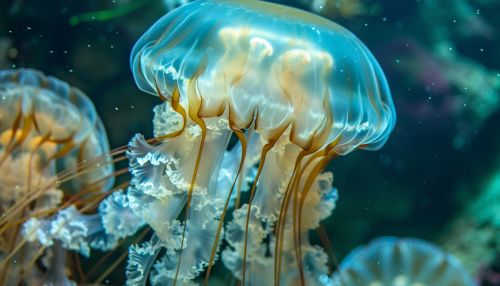Jellyfish
Introduction
Jellyfish are free-swimming marine animals belonging to the phylum Cnidaria. They are characterized by their gelatinous bodies and long, trailing tentacles. Jellyfish are found in every ocean, from the surface to the deep sea. Some jellyfish inhabit freshwater. They are not a single taxonomic group, but rather a collection of species from multiple orders and families.
Anatomy and Morphology
Jellyfish have a simple body structure, consisting of a bell-shaped or umbrella-shaped body and trailing tentacles. The body is composed of a soft, gelatinous substance that is more than 90% water, which allows them to float. The tentacles are equipped with specialized cells called cnidocytes, which contain venomous stinging structures called nematocysts. These are used for capturing prey and for defense against predators.


Life Cycle
The life cycle of a jellyfish is complex and involves both sexual and asexual reproduction. It typically includes four stages: the fertilized egg, the larva (or planula), the polyp, and the medusa. The medusa is the most familiar stage, representing the free-swimming adult form of the jellyfish.
Diet and Predation
Jellyfish are carnivorous, feeding on a variety of organisms such as small fish, plankton, and other jellyfish. They capture their prey using their tentacles, which are lined with venomous stinging cells. Despite their simple body structure, jellyfish are effective predators. However, they are also preyed upon by a variety of species, including sea turtles, certain fish, and even other jellyfish.
Impact on Humans
Jellyfish have a significant impact on human activities. Their stings can be painful and, in some cases, lethal to humans. They can also cause substantial damage to fishing gear and clog the cooling systems of power and desalination plants. On the other hand, jellyfish are harvested for their collagen, which is used in a variety of products, including cosmetics and food.
Conservation and Threats
Jellyfish populations are influenced by a variety of factors, including ocean temperature, salinity, and the availability of prey. Some species are threatened by pollution, habitat loss, and overfishing of their predators and prey. However, in some areas, jellyfish populations are increasing, possibly due to human activities such as climate change and overfishing.
